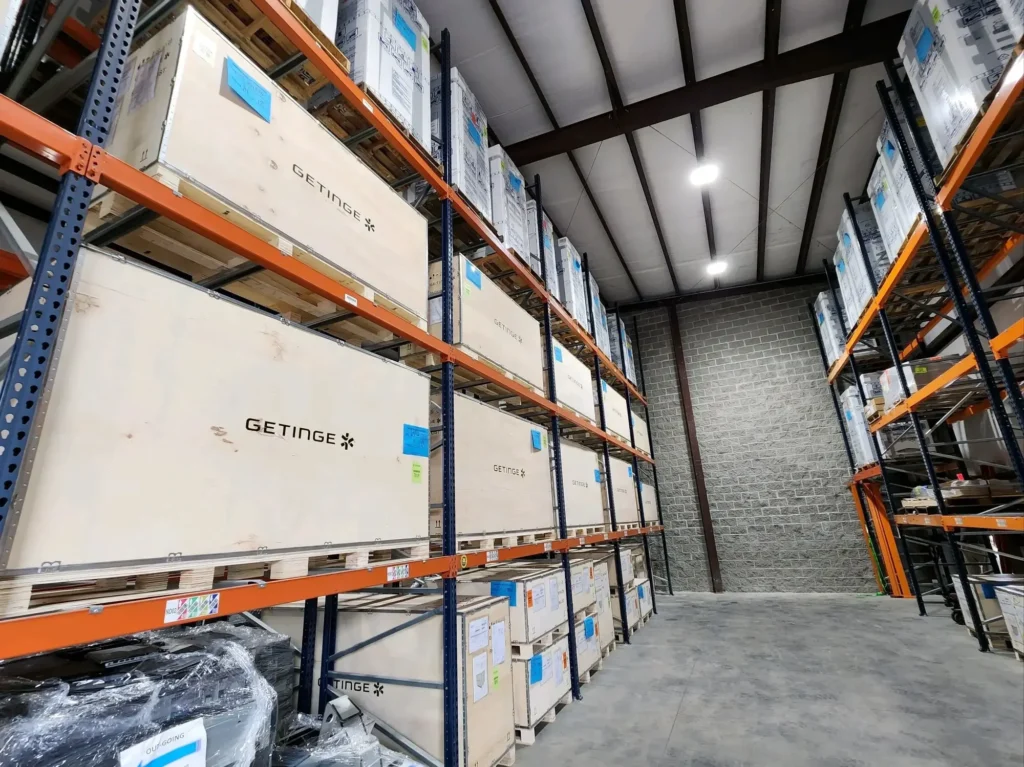While warehouses and distribution centers may look different than they did 20 years ago—thanks to the increased use of technology and robotics—the focus on worker safety remains as sharp as ever.
Create A Safety Culture
Brian C. Neuwirth, president of UNEX Manufacturing, Inc., in Lakewood, New Jersey, says safety is rooted in company culture. “And companies that embrace safety and the culture of safety will be successful,” he says. Creating that culture, he explains, requires:
Consistency. Training must be consistent and continual. Safety has to be an everyday topic, not a once-a-year training program.
Continuity. Everyone must be on the same page when it comes to safety procedures and training. And safety is for everyone, including full-time, part-time or temporary workers.
Commitment. There should be at minimum a manager-level person responsible for safety. And that person’s job is to make sure safety issues are front and center, and all workers are aware of requirements and responsibilities.
At NFI Industries, safety has always been a core value, and is being emphasized in 2019 as one of NFI’s corporate goals, explains Stephen Truono, senior vice president for enterprise risk management. The other goals, which span operating performance and attracting and retaining talent, are also closely tied to safety. “By leading with safety, our employees know we have their best interest at top of mind.”
Behavior-Based training
NFI, which operates approximately 50 million square feet of warehouse and distribution space, “continues to focus on enhancing its safety culture through behavior-based training in addition to regulatory and compliance-focused initiatives,” Truono says. Safety sponsorship begins with the executive committee and cascades down to operations managers, who are tasked with leading the safety initiatives at warehouses and distribution centers. “Additionally, as we implement the behavior-based safety process, it will also be a bottoms-up initiative,” he says. “Because in a true behavior-based safety system, the employees drive the process, and management provides the resources and structure.”
The premise is to acknowledge good behavior, recognize those that are following safety procedures, encourage employees to coach one another, and build a relationship by following safety that is employee-to-employee based. Truono explains a warehouse manager recently took “a very simple” step toward that goal during a facility redesign.
“He walked around and asked the associates what changes could improve their job and workplace safety,” he says. “He received lots of feedback, ranging from moving certain stations to a different side to lowering a belt a couple of inches. We were able to incorporate most of them, and employees were happy to share their ideas.”
Focus on Standardization
Neuwirth notes that if a company finds continued safety issues in a certain job function or area, it should use a process improvement plan. This type of proactive approach to identify, analyze and then improve the situation can help a company address issues, many of which can be fixed with easy solutions such as improved lighting or lift assists.
The commitment to process improvement at UNEX is reflected in the company’s ISO certification, Neuwirth says. “ISO is about standardization and work processes. Does that make our organization a safer environment? Yes, because everything is documented on exactly how to do things. It evolved our processes to the point where documentation and training go hand in hand, which ultimately makes our production a safer environment.”
Following are some key safety topics centering on systems and training.
Material handling. Many warehouse safety issues still revolve around lifting, twisting, reaching and bending. That’s why Truono says NFI is looking at ways to “engineer out the lift” for improved worker safety. Ways to do that include vacuum-type lifts; more and better conveyor systems, including articulated conveyors inside trailers; and safer forklifts. Also, RFID tags are used for employees who work around automated material handling equipment to avoid pedestrian-type accidents.
Robotics. Robots are not new to warehousing, but improvements have made them more affordable, increasing their use. Robots create a safer environment because they are programmed and are more predictable than an employee around moving equipment, Neuwirth says. Truono adds that GPS-coordinated robots that assist with product location and picking helps reduce physical exertion of employees searching for items.
Training. Training is key to any safety program, and Truono says technology is improving the way workers train today. Micro-training, a two-to-three-minute lesson on a specific topic, is available on a smartphone or tablet. The lessons are progressive, with additional information offered with each continuing session. “Companies are finding micro-training is more effective than sitting in a room for 40 minutes talking about material handling safety.”
Although still very new, virtual reality training is also being used in safety training. Wearing VR glasses, workers walk through scenarios on how to safely perform their jobs. Truono says VR and micro-training also provide a documentation trail for employers.
Temporary workers. Safety becomes more complicated with the influx of seasonal and temporary workers. Even if a worker is temporary, Neuwirth says the safety training should be the same. He says it starts the employee, who may become full time, off on the right foot. Often, temporary workers will receive basic safety training from the staffing agency that hires them. Truono says in that case, NFI also follows up with additional training about its specific warehouses. But both agree that a temporary or seasonal labor force is challenging for workplace safety.
No matter what the safety challenges are, Truono says that professionals have to recognize that “warehouses are not just buildings that store inventory anymore. They are smart properties that are increasingly using technology and innovation to drive safety and operating performance.”

